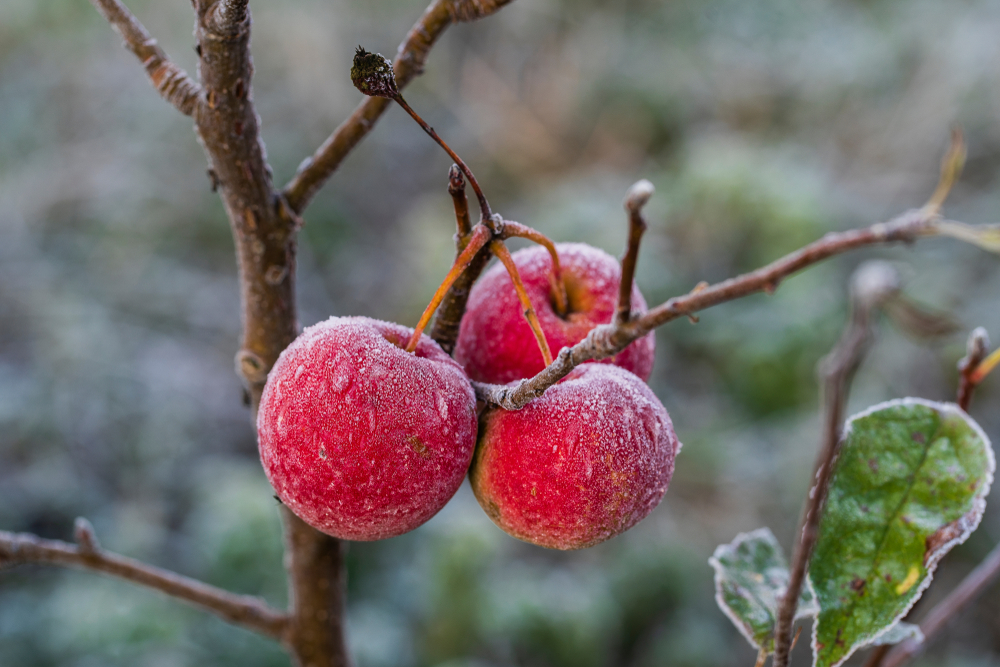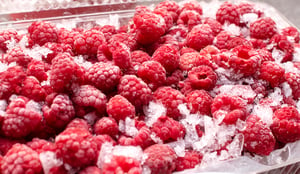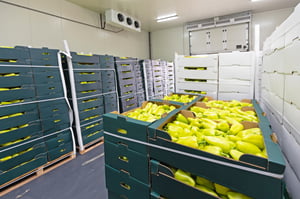
Why is it that we always want to hang out with the cool kids? Being liked and popular never goes out of style. But for our industry, the supply chains of fresh produce and fresh floral products, being cool takes on a whole new meaning.
Once fruits and vegetables are harvested, they start to die and decompose. I know it sounds morbid, but seriously, their earthly bodies go through a natural decay process. The good news is this decline can be slowed down to retain each crop’s maximum shelf life.
But how do you get cool and stay cool? Speed is everything at the point of harvest. Managing a crop through harvest, pre-cooling and storage is the immediate post-harvest period that must not be compromised.
do you get cool and stay cool? Speed is everything at the point of harvest. Managing a crop through harvest, pre-cooling and storage is the immediate post-harvest period that must not be compromised.
Everything had to be local in the old days. Produce just couldn't be shipped very far. Today we ship items across the country and the world and make it look easy, but it remains challenging to manage and monitor living organisms and the systems that carry them.

It starts at harvest. Once picked, the first step is to cool the crop down (the pre-cooling stage). There are four methods used to cool a crop down. For example, on an 80 degree day, each head of lettuce is effectively 80 degrees. We all know lettuce doesn’t keep long if it’s held at 80 degrees once harvested, so various pre-cooling techniques are utilized to remove the field heat. But for different crops, such as a tray of strawberries, the cooling method must be appropriate because the physiology of berries is different than a head of lettuce.
A nice overview of the various cooling methods can be found on this helpful page from NC State. Here are a few highlights:
Vacuum Pressure is for crops with high surface area and can also handle getting wet. Examples are typically any leafy item such as lettuce, spinach, romaine and cabbage.
Hydro Cooling is for crops that have significant mass but low surface area. When these crops get wet it doesn’t harm them or enable foreign pathogens to take root. Examples are apples, pears, cherries and sweet corn.
Forced Air is for crops with significant mass and low surface area, but these crops must be kept dry. High moisture content harbors pathogens like fungus or mold spores where subsequent infections degrade the quality and shelf life. Examples are table grapes, berries and tomatoes, as well as various types of melons.
Ice is perhaps the oldest cooling method and is still prevalent, but it requires costly application of large volumes of ice. Examples of ice cooling would be broccoli, sweet corn and various specialty crops such as radishes.

Getting crops through their pre-cooling phase asquickly as possible is critical to maintaining their freshness and establishes the foundation for a non-compromised shelf life.
Keeping products cool after these processes is another matter and one that requires effective temperature monitoring and awareness of the various cooling methods. I’ll pick that thread in my next post.
These Stories on Food Safety
Procurant USA LLC
475 Alberto Way - Suite 230
Los Gatos, CA 95032
1-669-221-1026
info@procurant.com
